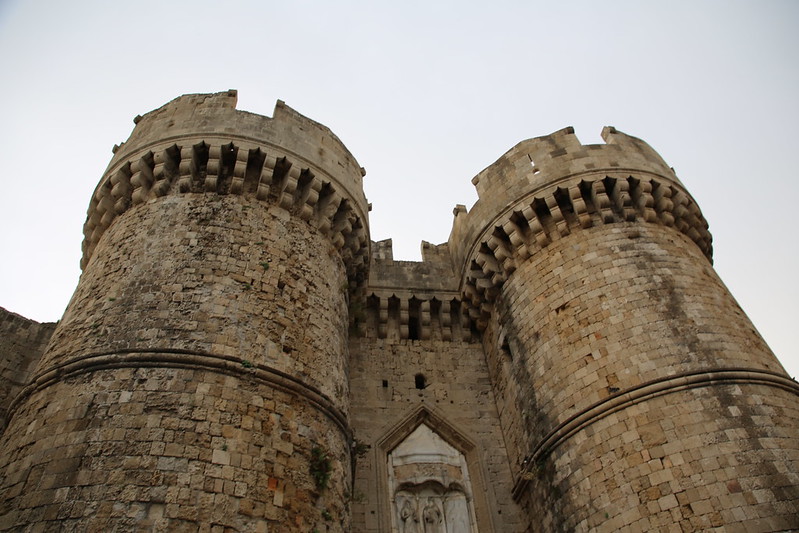The Dodecanese Islands are a group of twelve large and 150 smaller Greek islands in the southeastern Aegean Sea, located close to the coast of Turkey. These islands are known for their natural beauty, rich history, and cultural heritage. They offer a mix of traditional Greek architecture, charming villages, pristine beaches, and crystal-clear waters, making them a popular tourist destination.
The Dodecanese Islands are a group of twelve large and 150 smaller Greek islands located in the southeastern Aegean Sea. The islands have a rich history that dates back thousands of years, and they have been shaped by a variety of cultures, including the ancient Greeks, the Romans, the Byzantines, the Knights of St. John, and the Ottoman Empire. Here is a timeline of the major events that have shaped the history of the Dodecanese Islands:
Prehistoric Times:
- The first human settlements on the Dodecanese Islands are believed to date back to the Neolithic period, around 4000 BC.
- The islands were later inhabited by the Minoans, who established trade links with the islands of the Aegean.
Ancient Greek and Roman Periods:
- The Dodecanese Islands were part of the ancient Greek world, and they were incorporated into the Athenian Empire in the 5th century BC.
- In the 2nd century BC, the islands were conquered by the Romans, who ruled over them until the fall of the Roman Empire in the 5th century AD.
Byzantine Empire:
- The Byzantine Empire took control of the Dodecanese Islands in the 6th century AD, and they remained part of the empire for several centuries.
- During this period, the islands flourished economically and culturally, and they played an important role in the development of the Eastern Mediterranean.
Knights of St. John:
- In the 14th century, the Knights of St. John, also known as the Knights Hospitaller, conquered the Dodecanese Islands and established a stronghold there.
- The Knights of St. John ruled over the islands for more than two centuries, and they built a number of impressive castles and fortifications that still stand today.
Ottoman Empire:
- The Ottoman Empire conquered the Dodecanese Islands in the early 16th century, and they remained part of the empire for several centuries.
- During this period, the islands suffered from economic decline and cultural stagnation, as the Ottomans focused their attention on other parts of their empire.
Italian Occupation:
- In 1912, the Dodecanese Islands were taken over by Italy, as part of their expansionist policy in the Mediterranean.
- The Italians established a colonial administration on the islands, and they implemented a number of economic and social reforms that had a lasting impact on the region.
Greek Independence:
- After World War II, the Dodecanese Islands were returned to Greece, and they became part of the modern Greek state.
- Since then, the islands have experienced a period of rapid economic and social development, and they have become an important tourist destination in the Mediterranean.
In conclusion, the history of the Dodecanese Islands is a rich and complex one, shaped by a variety of cultures and civilizations over the centuries. From the ancient Greeks and Romans to the Byzantine Empire, the Knights of St. John, the Ottomans, and the Italians, the islands have been shaped by a variety of influences that have left their mark on the region. Today, the Dodecanese Islands are a vibrant and dynamic part of modern Greece, and they continue to attract visitors from around the world with their natural beauty, cultural heritage, and rich history.
Here is a list of all the islands in the Dodecanese group:
- Rhodes: The largest and most popular of the Dodecanese Islands, Rhodes is famous for its stunning beaches, ancient ruins, and medieval Old Town, which is a UNESCO World Heritage site.
- Kos: Known for its long sandy beaches, lush greenery, and ancient Greek ruins, Kos is a popular destination for beach lovers and history buffs.
- Karpathos: One of the most picturesque islands in the Dodecanese, Karpathos boasts unspoiled beaches, stunning natural landscapes, and traditional Greek villages.
- Kalymnos: Famous for its rugged cliffs and clear waters, Kalymnos is a haven for rock climbers and scuba divers.
- Leros: Leros is a tranquil island with a rich history and culture, featuring ancient castles, traditional villages, and beautiful beaches.
- Patmos: Considered a holy island, Patmos is home to the Monastery of Saint John the Theologian, a UNESCO World Heritage site, and a popular pilgrimage destination.
- Astypalaia: A small island with stunning white-washed villages, turquoise waters, and a picturesque castle, Astypalaia is a hidden gem in the Dodecanese.
- Nisyros: Nisyros is a volcanic island known for its hot springs and scenic villages, where visitors can experience traditional Greek culture and architecture.
- Tilos: A small and unspoiled island with a rich history and wildlife, Tilos is perfect for nature lovers and those seeking a peaceful retreat.
- Symi: Symi is a charming island with pastel-colored houses, a picturesque harbor, and stunning beaches, making it a popular destination for day-trippers from Rhodes.
- Halki: Halki is a small and peaceful island with a rich history and architecture, featuring colorful neoclassical buildings and traditional Greek churches.
- Kastellorizo: The easternmost island of Greece, Kastellorizo is a hidden gem with a picturesque harbor, colorful houses, and crystal-clear waters perfect for swimming and snorkeling.
In conclusion, the Dodecanese Islands are a treasure trove of natural beauty, history, and culture, offering a unique travel experience for visitors seeking to explore the Greek islands. Whether you are interested in ancient ruins, traditional villages, pristine beaches, or stunning landscapes, the Dodecanese has something to offer for everyone.


1 thought on “Dodecanese Island Group”